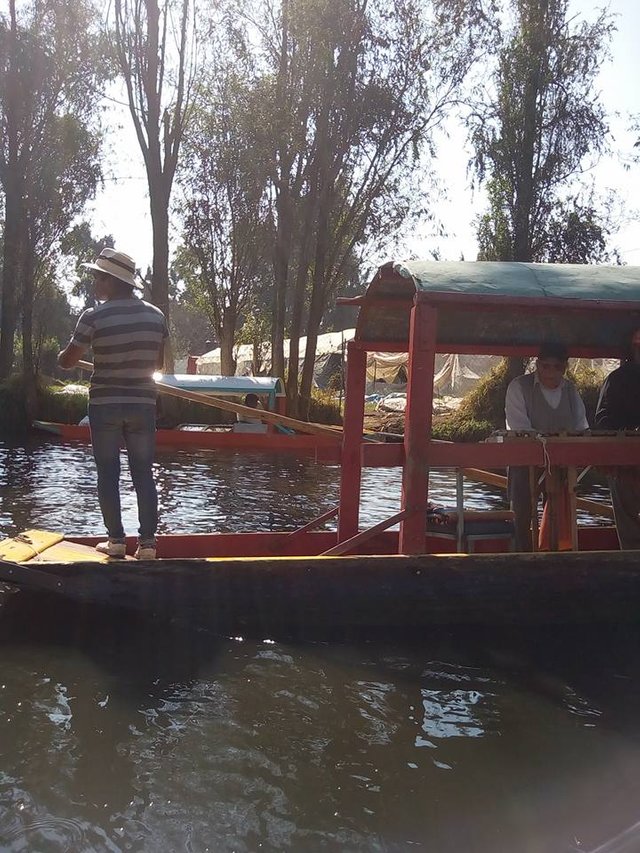Life In The Gift Economy and Beyond: Xochimilco in Mexico City

Lake Xochimilco and the canal system[edit]
Cows grazing along a canal
Xochimilco is characterized by a system of canals, which measure about a total of 170 km2.[18] These canals, and the small colorful boats that float on them among artificially created land called chinampas are internationally famous.[11][19] These canals are popular with Mexico City residents as well, especially on Sundays.[19] These canals are all of what is left of what used to be a vast lake and canal system that extended over most parts of the Valley of Mexico, restricting cities such as Tenochtitlan (Mexico City) and Xochimilco to small islands.[6][20][21] This system of waterways was the main transportation venue, especially for goods from the pre-Hispanic period until the 20th century.[20] In the pre-Hispanic period, parts of the shallow lakes were filled in, creating canals. Starting in the early colonial period, the interconnected lakes of the valley, including Lake Xochimilco, were drained. By the 20th century, the lakes had shrunk to a system of canals that still connected Xochimilco with the center of Mexico City. However, with the pumping of underground aquifers since the early 20th century, water tables have dropped, drying canals, and all that are left are the ones in Xochimilco.[18][20] The canals are fed by fresh water springs, which is artificially supplemented by treated water. This because water tables are still dropping and human expansion and filling in of canals is still occurring, threatening to have the last of these canals disappear despite their importance to tourism.[11][18][19][20][21] https://en.wikipedia.org/wiki/Xochimilco#Canals,_chinampas_and_trajineras

Created with Steepshot
View in the web app
